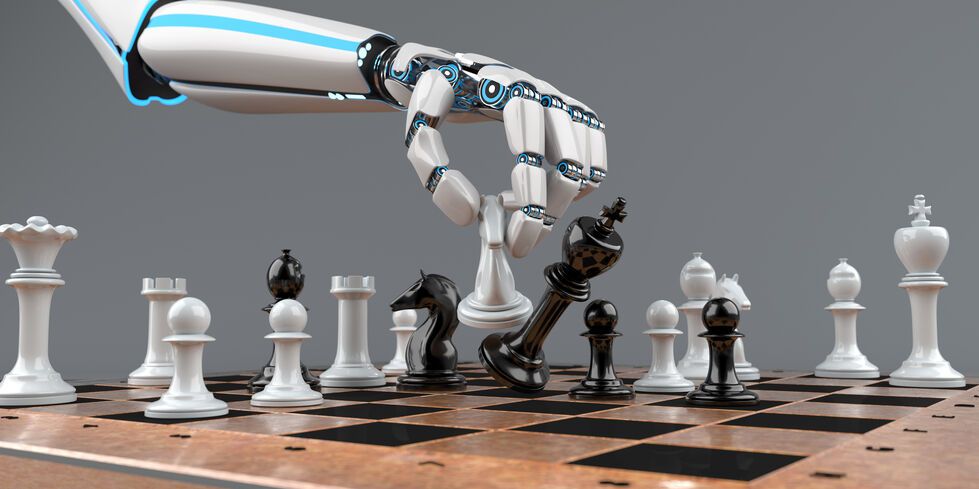Both online and offline, generation is booming. Among different virtual transformation tasks, augmented reality (AR) and synthetic intelligence have stood out in current years. Present-day competencies are only scratching the surface of what they’ll sooner or later be able to do. In 2016, the worldwide AI market was worth about $3,222, and analysts task year-over-yr growth, with the marketplace value rising to $11,284 in 2019 and $89,847 in 2025. Similarly, analysts expect the AR marketplace size will develop to $209.2 billion in 2022, up from $6.1 billion in 2016. With this drawing a close increase, retailers are in a top function to capitalize on the growing gravitation closer to AR and AI to make more personalized tips to buyers. After all, patron delight is key.
Enhance keep navigation with AR.
The huge use of smartphones makes the device a number one target for imposing AR technology. With clever phones come cellular apps, and people who function personalized AR navigation can assist outlets in delivering a brand new stage of patron engagement in-keep. Whether a client desires to look for a product via standard period, specific logo name, product, or precise product code, apps like these permit the shopper to look in the diffusion of ways, in step with their character needs.

Once consumers unearth the app’s desired product, they can tap on the item to begin navigating from the client’s specific area to the product’s shelf area. By clearly following their telephone’s AR-enabled navigation to each item, the shopper can take the whole ride more easily than ever. Using AR to navigate a store better, consistent with options or existing shopping lists, lets customers enjoy simpler findability and expanded discovery of applicable merchandise.
Connected stores that use Electronic Shelf Labels (ESL) can facilitate and build on AR capability. Digital cabinets with integrated Bluetooth low-power beacons permit AR-enabled apps to assist in navigating consumers in the direction of a product. Once the shopper unearths the product, ESLs act as key purchaser interplay gear, delivering near actual-time product data, inventory stages, reviews, competition’ expenses, and greater pace, agility, and consistency. These records can be strategically located based on their purchasing behavior or preferences. They provide unique offers or statistics to the consumer, allowing them to view highlights of the product’s shelf area with AR callouts.
AI-pushed personalization makes its mark.
When it involves AI and beyond, it’s obvious that personalization methods boom sales for retailers and types. According to Boston Consulting Group’s 2017 “Profiting from Personalization” document, “Brands that create personalized stories by way of integrating superior virtual technologies and proprietary facts for clients are seeing sales increase with the aid of 6% to ten%, in step with our research — two to 3 instances quicker than the ones that don’t.
Once consumers are in the shop, AI can play a powerful function in creating a rewarding purchasing experience. The use of AI-pushed personalization for the e-commerce channel is probably greater, not unusual right now; however, in step with specialists, AI’s destiny is honestly countless – specifically in the bodily store. According to Tom Savigar, Senior Partner, The Future Laboratory, there may be absolute confidence that the destiny physical retail can be a mixture of the velocity and comfort presented using AI — in addition to human touch. “Customers need to be engaged through human interaction in preference to the theatrics of light and sound, so outlets might do nicely to create community occasions and use statistics to offer customized in-store reviews,” stated Savigar.
Looking to the not-so-distant future: happy buyers are key.
Customers long for the day they can go away from a store feeling assured in all their purchases, unhindered by thoughts that they could have sold extra relevant objects or annoyance from losing an excessive amount of time figuring out what to shop for. To help buyers avoid those negative emotions and alternatively experience an experience of satisfaction and accomplishment, shops are increasingly making it their task to help shoppers both decide what they need and locate what they need in real-time.
Though pegged to a generation of the”destiny,” fully functioning AR and AI technologies are an idea not too far off the horizon. As stores revamp their stores with these features, consumers will experience care as they may be assisted at eachprocedure’ss contact factor. The result isn’t always the simplest accelerated sales; however, improving unswerving buyers is important to a thriving enterprise.